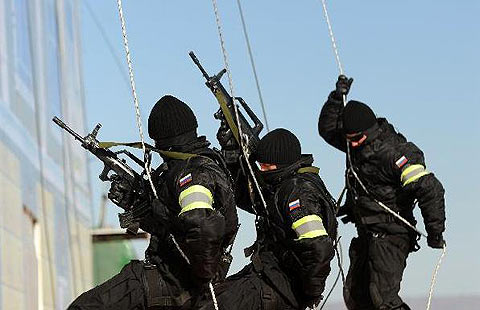From military model to market forces
Updated: 2014-10-28 08:17
By Peng Yining(China Daily)
|
||||||||
 |
|
Students in Qinhuangdao, Hebei province, wait to get on a Beidou bus. The Beidou Navigation Satellite System has been used in many areas since it was put into operation in 2012. Its accuracy will reach 2.5 meters by 2020 and will provide services to many countries. Zhu Xingxin / China Daily |
Many of China's leading defense companies are to be merged with commercial enterprises, as Peng Yining reports.
China is planning to accelerate the integration of State-owned defense contractors and private companies to boost the economy and strengthen the national defense system.
The program aims to build on the success of military-inspired innovations that have already found their way into civilian life. For example, China Shipbuilding Industry Corp, one of the country's largest defense-sector enterprises, which took a leading role in the construction of the first Chinese-built aircraft, now also produces commercial yachts. Water-saving technology developed by China Aerospace Science and Technology Corp is now widely used in the agricultural sector, and the company's Beidou navigation system is used to monitor forest fires and the movements of endangered animals in conservation areas.
China National Nuclear Corp, which is designated as being part of the defense industry, has used construction techniques it developed when building nuclear power stations to participate in major civilian construction projects, including the Bird's Nest stadium which was built for the 2008 Beijing Olympic Games.
According to a recent report by the Ministry of Industry and Information Technology, 26 bases for civil and military industrial integration have been established, and 2 billion yuan ($327 million) has been invested in the project. The companies involved produced goods worth 1 trillion yuan in 2013.
"About 30 percent of military and civilian inventions could cross over into each other's markets," said Cao Zhiheng, inspector of the ministry's Military-Civilian Promotion Department. "By 2020, China will have a full regulatory system to govern integration and to promote a healthy attitude toward sharing ideas and improving interaction between military and civil companies."
Since the 1990s, China has been developing its economic strength and national defenses simultaneously, said Wang Shunian, director of the Department of Coordinated Economic and National Defense Development at the National Development and Reform Commission.
In 1999, China's five main State-owned defense contractors were reorganized into 10 corporations that are allowed to operate under market conditions. That resulted in the value of goods produced by the military industrial sector falling by almost 50 percent, while the value of goods produced by commercial companies in the same field rose by 77 percent. Wang said the People's Liberation Army has also opened a large number of airports, ports, railways, storage facilities, and communication bases to nonmilitary operators.
Mianyang, the second-largest city in the southwestern province of Sichuan, is one of the country's most important bases for State-owned contractors, and home to 18 national research and development centers, including the China Academy of Engineering Physics and the China Aerodynamics Research and Development Center.
Between January and August, 33 fully integrated companies were established, bringing the number of such companies in Mianyang to 294. In the first eight months of this year, the value of the goods produced by the companies reached 91 billion yuan, 25 percent higher than in 2013, and total sales revenue was 93 billion yuan, a rise of 26 percent from a year ago.
With Mianyang as its main experimental area, China has been developing a greater number of military-to-civilian defense manufacturers and expanding their range of interests, according to Jiang Zhenghua, director of the Committee of the Military-Civilian Integration Research Center at the Academy of Military Sciences.

 Forging a bond
Forging a bond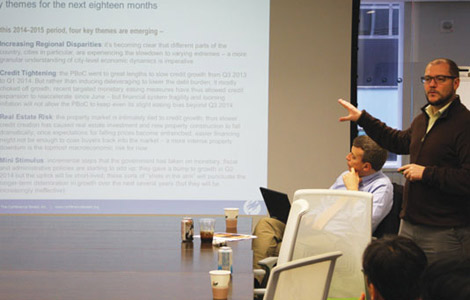
 China's economy in 'transition': expert
China's economy in 'transition': expert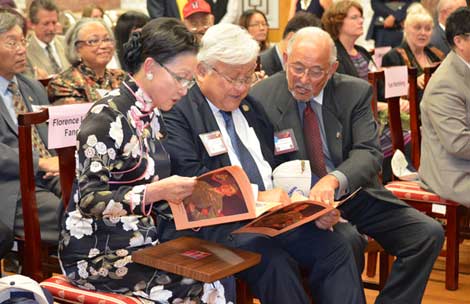
 WWII's Flying Tiger veterans saluted
WWII's Flying Tiger veterans saluted
 600-year-old Chinese book found in California
600-year-old Chinese book found in California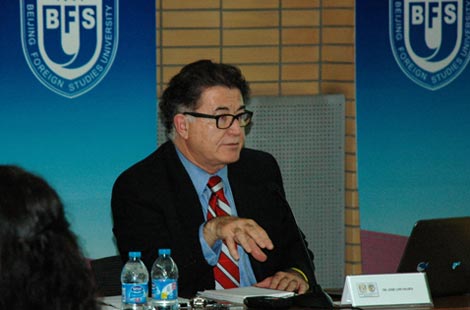
 China's growing role in Mexico not a threat to US: expert
China's growing role in Mexico not a threat to US: expert
 Beijingers see blue sky again after smoggy days
Beijingers see blue sky again after smoggy days
 9th Rome Film Festival kicks off
9th Rome Film Festival kicks off
 Highlights of China Fashion Week
Highlights of China Fashion Week
Most Viewed
Editor's Picks

|

|
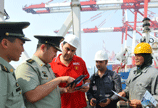
|

|

|

|
Today's Top News
Man guilty of murder in attack on Chinese students
Chinese economy to decline: experts
Reductions considered for capital punishment
China's economy in 'transition': expert
Investors eye US-made plastic alternative
China's growing role in Mexico not a threat to US: expert
Redesigned SAT test 'won't brainwash'
600-year-old Chinese book found in California
US Weekly

|

|


